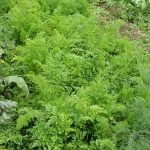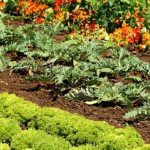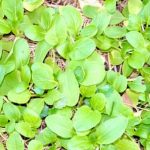Are you a first-time gardener looking to cultivate your own vegetables? If so, you’re in the right place. In this article, we’ll explore the basics of vegetable gardening and provide valuable tips for beginners.
Whether you have a spacious backyard or a small balcony, growing your own vegetables can be a rewarding and fulfilling experience. We’ll guide you through choosing the right location for your garden, preparing the soil, selecting easy-to-grow vegetables, caring for your plants, and harvesting the fruits of your labor.
As a first-time gardener, it’s important to start with easy-to-grow vegetables that require minimal maintenance and are resilient to common challenges. In this article, we’ll focus on providing you with options like tomatoes, lettuce, cucumbers, carrots, beans, peppers, radishes, and zucchini – all of which are perfect for beginners. Whether you’re limited on space or time, these vegetables are ideal for anyone new to gardening and eager to see results.
Gardening is not just about planting seeds and watching them grow; it’s also about creating an environment that supports healthy plant development. We’ll cover everything from choosing the right location for your garden to understanding the needs of each vegetable plant. By the end of this article, you’ll have the knowledge and confidence to start your own vegetable garden and enjoy a bountiful harvest in no time.
Choosing the Right Location for Your Vegetable Garden
When it comes to starting a vegetable garden, one of the most important factors to consider is the location. The success of your garden depends on the amount of sunlight, soil type, and drainage in the chosen area. Here are some tips for choosing the right location for your first-time vegetable garden.
Sunlight
The majority of vegetables require at least 6 hours of direct sunlight each day. When selecting a location for your garden, take note of how much sunlight different areas receive throughout the day. Keep in mind that the position of the sun changes with the seasons, so it’s essential to observe and understand sunlight patterns in your yard before making a decision.
Soil Type and Drainage
Before planting any vegetables, it’s crucial to assess the soil type and drainage of your chosen location. Most vegetables thrive in well-drained soil that is rich in organic matter. Conduct a simple soil test to determine its composition and pH level. If you find that your soil is compacted or has poor drainage, consider raised beds or containers as an alternative.
Once you have carefully chosen the right location considering these factors – sunlight, soil type, and drainage – you will set yourself up for success as a first-time gardener growing easy-to-grow vegetables. By providing your plants with optimal conditions from the start, you increase their chances of thriving and producing a bountiful harvest.
Planning and Preparing Your Garden Bed
When it comes to vegetable gardening, planning and preparing your garden bed is a crucial step in ensuring a successful harvest. Whether you’re working with a small plot or a larger space, taking the time to clear and till the soil and add compost or fertilizer will set the stage for healthy plant growth and abundant produce. In this section, we will discuss the necessary steps to get your garden bed ready for planting.
Clearing the Soil
Before you start tilling the soil, it’s important to clear the area of any debris such as rocks, weeds, or other obstructions. This can be done manually using a shovel or garden fork, or with the help of tools like a hoe or weed trimmer. By removing these obstacles, you create a clean canvas for your vegetables to grow without competition for nutrients and water.
Tilling the Soil
Once the soil is cleared, it’s time to till it to break up any compacted areas and improve its texture. You can use a manual garden tiller or opt for a motorized version for larger areas. Tilling also helps to incorporate organic matter and aerate the soil, creating an environment that’s conducive to root development.
Adding Compost or Fertilizer
After tilling, it’s beneficial to amend the soil with compost or fertilizer to provide essential nutrients for plant growth. Compost can be added in generous amounts to improve soil structure and fertility, while organic fertilizers can supplement any deficiencies in the soil. Both options promote healthy microbial activity in the soil, which is essential for nutrient uptake by plants.
By following these steps to plan and prepare your garden bed, you’ll be well on your way to growing easy-to-grow vegetables for first-time gardeners successfully. Taking these initial steps will lay the groundwork for a thriving vegetable garden that will reward you with bountiful produce throughout the growing season.
Easy to Grow Vegetable Options for Beginners
As a first-time gardener, it’s important to choose vegetable options that are easy to grow and maintain. This will help build confidence and success in your gardening endeavors. Some great vegetable options for beginners include tomatoes, lettuce, cucumbers, carrots, beans, peppers, radishes, and zucchini. These vegetables are known for being low-maintenance and relatively resistant to pests and diseases, making them ideal choices for those new to gardening.
Tomatoes are a popular choice for first-time gardeners due to their versatility in cooking and their relatively easy maintenance. They thrive in warm weather and require plenty of sunlight and well-draining soil. Lettuce is another easy option that can be grown throughout the year in cooler climates. It requires consistent watering and well-tilled soil with plenty of organic matter.
Cucumbers are also a great choice as they grow quickly and produce an abundant harvest. Carrots are known for being easy to grow as well, although they do require loose soil free from rocks or other obstructions that may cause misshapen roots. Beans are ideal for beginners as they enrich the soil with nitrogen as they grow, making it an easier task to keep the soil healthy.
Peppers thrive in warm weather and can be grown in pots if you have limited space in your garden. Radishes are known for their quick growth and resistance to pests and disease which makes them a great option for beginners. Lastly, zucchinis grow quickly and abundantly making them perfect for novice gardeners.
Beginner gardeners should take the time needed in understanding each vegetable’s needs regarding sun exposure requirements, spacing between plants when planting, watering frequency or intervals based on the specific plant requirements as part of responsible gardening.
| Vegetable Option | Considerations |
|---|---|
| Tomatoes | Require plenty of sunlight; well-draining soil |
| Lettuce | Requires consistent watering; tilled soil with organic matter |
| Cucumbers | Grows quickly; produces abundant harvests |
Planting and Care Tips for Each Vegetable
When it comes to growing your own vegetables, understanding the specific planting and care tips for each type of vegetable is crucial for a successful harvest. Whether you’re a first-time gardener or have some experience, knowing the spacing, watering, and fertilizing requirements for different vegetables can make a big difference in the health and yield of your plants. Here are some essential tips for common easy to grow vegetables for first time gardeners:
- Tomatoes: Tomatoes should be spaced about 18-36 inches apart, depending on the variety. They require regular watering, preferably in the morning, and benefit from a balanced fertilizer applied every few weeks.
- Lettuce: Plant lettuce seeds or seedlings about 6-18 inches apart, depending on the type of lettuce. Keep the soil consistently moist but not waterlogged, and consider using a nitrogen-rich fertilizer every 3-4 weeks.
- Cucumbers: Cucumber plants need to be spaced about 36-60 inches apart to allow room for their vines to spread. They thrive with consistent moisture, so regular watering is essential, and they can benefit from a balanced fertilizer every 3-4 weeks.
Understanding these specific requirements will help ensure that each vegetable gets what it needs to grow and produce an abundant harvest. As a first-time gardener, it’s important to familiarize yourself with these guidelines before planting to give your veggies the best chance of success.
Additionally, paying attention to any specific needs or preferences of individual vegetables will help you troubleshoot any issues that may arise as your garden grows. As you gain more experience in gardening, you’ll become more attuned to the unique needs of each plant and be able to fine-tune your care routine accordingly.
By learning and implementing these planting and care tips for different vegetables in your garden, you’ll increase your chances of growing healthy plants that yield plenty of delicious homegrown produce. With patience and practice, you’ll soon become confident in your ability to nurture a thriving vegetable garden full of easy-to-grow varieties perfect for any beginner gardener.
Dealing With Common Garden Pests and Diseases
When starting your vegetable garden, dealing with common garden pests and diseases is an inevitable part of the process. However, with the right knowledge and preparation, you can effectively prevent and control these issues using natural methods. Here are some easy-to-implement tips for first-time gardeners:
1. Practice crop rotation: One of the simplest ways to prevent diseases in your vegetable garden is by practicing crop rotation. This involves planting different types of vegetables in different areas each year to minimize the buildup of pests and diseases in the soil.
2. Use companion planting: Certain plants have natural properties that repel pests or attract beneficial insects. For example, planting marigolds alongside your vegetables can deter nematodes, while attracting pollinators like bees.
3. Make use of organic pesticides: Instead of resorting to harsh chemical pesticides, consider using natural alternatives such as neem oil or insecticidal soap to control common garden pests like aphids, caterpillars, or beetles.
By taking proactive measures to prevent pests and diseases in your vegetable garden, you can ensure a bountiful harvest of fresh and healthy produce for your culinary endeavors. Happy gardening.
Harvesting Your Vegetables
Harvesting your own homegrown vegetables is one of the most rewarding aspects of vegetable gardening. It’s important to know when and how to harvest each type of vegetable in order to ensure that you are picking them at the peak of their flavor and freshness. This section will provide you with essential tips for harvesting some easy to grow vegetables for first time gardeners.
When it comes to tomatoes, it’s best to wait until they are fully ripe before harvesting. Look for firm, fully colored fruits and gently twist them until they come off the vine.
Lettuce can be harvested by either cutting the outer leaves as needed or by pulling up the whole plant if a larger harvest is desired. Cucumbers should be harvested when they are a bright green color and firm to the touch, using a sharp knife or garden shears to cut them from the vine.
Carrots are ready to be harvested when they have reached their full size, usually around 1 inch in diameter. Carefully loosen the soil around the carrot and pull it straight up from the ground. Beans can be picked when they are slender and about 4-6 inches long.
Simply grasp the bean pod and gently pull it from the vine. As for peppers, they can be harvested at any stage – from green to red – depending on your preference for sweetness and spiciness.
By understanding the specific harvesting requirements for each type of vegetable, you’ll be able to enjoy a bountiful harvest from your garden while ensuring that your produce is at its most delicious and nutritious state. Keep in mind that regular harvesting will also encourage further production from your plants, allowing you to continue enjoying fresh homegrown vegetables throughout the growing season.
Enjoying the Fruits of Your Labor
Growing your own vegetables can be incredibly rewarding, and once your garden starts producing, you’ll want to make the most of the delicious bounty. Not only will you get to enjoy fresh, flavorful produce, but you’ll also have the satisfaction of creating meals from your very own harvest. Let’s explore some recipe ideas and cooking tips to help you make the most of your homegrown vegetables.
One of the easiest and most popular ways to enjoy your fresh vegetables is by making a simple salad. With lettuce, tomatoes, cucumbers, and radishes from your garden, you can create a beautiful and nutritious salad that is bursting with flavor. Simply wash and chop up your veggies, toss them together in a bowl, top with your favorite dressing, and enjoy a healthy and satisfying meal.
Another fantastic way to utilize your homegrown produce is by making vegetable stir-fry. Use an assortment of vegetables such as peppers, carrots, beans, and zucchini straight from your garden to create a colorful and delicious stir-fry dish. The vibrant colors and flavors of these fresh vegetables will add an extra dimension to your meal that store-bought produce just can’t match.
If you find yourself with an abundance of tomatoes from your garden harvest, consider making homemade pasta sauce. Tomatoes are one of the easiest vegetables for first time gardener so chances are you’ll have plenty to use up. By making your own pasta sauce using fresh tomatoes, you can savor the true essence of this versatile fruit while knowing exactly what’s going into it – no preservatives or additives required.
| Recipe Ideas | Cooking Tips |
|---|---|
| Simple Garden Salad | Experiment with different dressings to find the perfect match for your homegrown vegetables |
| Vegetable Stir-Fry | Cut vegetables uniformly for even cooking; don’t overcook to preserve crisp texture |
| Homemade Pasta Sauce |
Conclusion
In conclusion, vegetable gardening can be a rewarding and enjoyable experience, especially for first-time gardeners. By following the tips and suggestions outlined in this article, you can easily grow a variety of vegetables in your own backyard.
From tomatoes and lettuce to cucumbers and peppers, there are plenty of options for beginners to choose from. With the right location, proper planning, and care, you can have a successful vegetable garden that will provide you with fresh produce throughout the growing season.
For those who are new to gardening, it’s important to start small and focus on easy to grow vegetables for first-time gardeners. Tomatoes are a great choice as they thrive in most climates and can be used in a variety of dishes. Lettuce is also a beginner-friendly option that does well in containers or raised beds. Cucumbers, carrots, beans, peppers, radishes, and zucchini are all easy to grow and can be incredibly rewarding for novice gardeners.
If you’re feeling overwhelmed or unsure about how to get started, there are plenty of resources available to help you along the way. Local gardening clubs and online forums can provide valuable advice and support as you navigate through your first growing season. Additionally, there are numerous books and websites dedicated to vegetable gardening that offer tips on everything from soil preparation to pest control.
With a little patience and perseverance, you’ll soon be enjoying the satisfaction of harvesting your own homegrown vegetables. So don’t hesitate any longer – get out there and start your own vegetable garden today.
Frequently Asked Questions
What Vegetables Are Good for First Time Gardeners?
For first-time gardeners, it’s best to start with easy-to-grow vegetables like tomatoes, zucchini, lettuce, bell peppers, and green beans. These vegetables are low-maintenance and have a high chance of success for beginners.
How Do You Start a Vegetable Garden for Beginners?
To start a vegetable garden as a beginner, it’s important to choose a suitable location with plenty of sunlight and well-draining soil. Start small with just a few vegetables and gradually expand as you gain more experience. Remember to water regularly and keep an eye out for pests.
What Are the 10 Easiest Vegetables to Grow?
The 10 easiest vegetables to grow are radishes, lettuce, cherry tomatoes, green beans, zucchini, cucumbers, Swiss chard, bell peppers, snap peas, and carrots. These vegetables require minimal effort and are ideal for beginners or those with limited gardening space.

If you’re looking to get into vegetable gardening, or are just looking for some tips on how to make your current garden better, then you’ve come to the right place! My name is Ethel and I have been gardening for years. In this blog, I’m going to share with you some of my best tips on how to create a successful vegetable garden.





